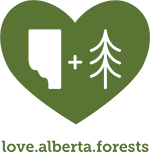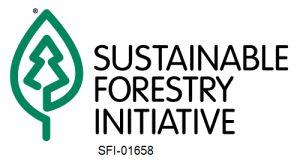On November 14, 2013 Spray Lake Sawmills held a Protected Areas Design Workshop. Five participants were present, two representing Nature Alberta and three representing neighboring landowners to the Forest Management Agreement Area. The workshop included discussion of the following topics:
FSC and the Protected Areas Gap Analysis Review
The FSC Standard/Requirement: 6.4 Protected Areas Network: Make use of a protected areas gap analysis and; use the gap analysis to identify additional protected areas. 6.43 states SLS is to work cooperatively with interested parties in the analysis of gaps and candidate protected areas.
SLS released its first protected areas paper for peer review and public comment in March of 2013. SLS wrote the second version in July of 2013 to include public comment and peer review feedback. SLS identified gaps in the foothills Subregion within the FMA regional assessment area. Approximately 37% of the regional assessment area is formally protected. SLS identified approximately 138 km2 (14,000 hectares) to fill protected area gaps resulting from SLS’s 12% target. In contrast to SLS’s proportionate share of the provincial target which is approximately 17 km2.
The gap analysis identifies three potential sources to fill gaps: The Red Deer ESA (with approx. 30 km2), the passive land base designed to meet ecological objectives (containing up to 280 km2), and the SSRP protected areas that are pending. Currently the draft SSRP has identified 1.3km2 of Upper Foothills Subregion area called the Don Getty extension.
New ecological/forest inventory information will be available in late 2014 to 2015 and a new spatial harvest sequence is to be developed in 2016. There’s a process outlined in the report, this process needs to be developed into plans and schedules to move forward with the projects. To go through the process we need the help of project committees. The first step is to see who is interested in which locations and how interested parties want to work with SLS.
SLS has developed a process to fill gaps outlined in the gap analysis.
Step 1: site identification and selection.
Step 2 is a feasibility assessment.
Step 3: is securement and agreement
Step 4: is the regulatory process.
Why did we identify/prioritize the Red Deer River ESA as a protected area candidate?
It’s a nationally ranked ESA; it contains a disproportionate share of the five unique habitats; it’s been classified as an HCVF, it’s a natural east/west movement corridor for numerous species of wildlife; as well as wintering area for ungulates and spawning habitat for a number of fish species.
Where are we now in the process? SLS is looking for interested parties to work with in evaluating candidates. We want to prioritize on the Red Deer River ESA Phase 1- a pilot in coordinating a committee and learning the process and how to best evaluate candidates collaboratively.
Some Givens SLS communicated:
SLS doesn’t have authority to designate PA’s on its own. Formally protected areas projects are long term and take commitment and hard work from interested parties. Without stakeholder interest, support or participation from volunteers there’s not likely going to be much progress in terms of formal protection.
Suggested Plan for initiating protected area assessments
Project 1- The Red Deer River ESA. A committee interested in the Red Deer River ESA works through the process of evaluation.
Project 2- The Passive Land Base. Ideally, protected area network mapping can be incorporated with the upcoming Detailed Forest Management Planning (DFMP) process. The DFMP is a twenty year plan with 10 years of spatial harvest sequence. The protected area objective is to design portions of the passive land base to meet ecological objectives and serve as permanent reserves. The Spatial Harvest Sequence mapping project is scheduled for 2015. The DFMP, spatial harvest sequence mapping project will utilize new forest inventory data, Lidar imagery and computer modeling.
From a project scheduling standpoint, it’s recommended that committees design/map the protected area passive land base prior to the development of the next spatial harvest sequence which will be completed in 2015-2016. We will revisit this question with the committees’ that are eventually formed.
SLS wrote a questionnaire for interested parties to learn who is interested in which areas, to better facilitate and organize the process going forward.
Other topics discussed:
SLS harvest plans for the Richards Rd area.
Alberta tenure including: various dispositions, quotas, forest management agreement areas, leases, and occupants of the land.
Ecological goods and services, conservation offsets, and the draft SSRP.
What We Heard from Stakeholders on the questionnaire:
Participants responses are in italics.
Statement 1:
I would like to help lead the process and volunteer to be on a committee.
Please circle the answer that best describes your response: Yes No Undecided
80% yes 20% maybe
Statement 2:
My main interest is in the Red Deer River ESA project. Please circle the answer that best describes your response: Yes No Undecided
60% yes 40% no
Statement 3:
My main interest is in designing the passive land base to meet specific ecological objectives and serve as permanent reserves. Please circle the answer that best describes your response: Yes No Undecided
40% yes 60% undecided
Statement 4:
My interest is with both projects. Please circle the answer that best describes your response:
Yes No Undecided
60% yes 40% no
Statement 5:
I would like to help complete field assessments for the Red Deer River ESA project. Please circle the answer that best describes your response: Yes No Undecided
40% yes 60% undecided
Statement 6:
I would like to help design the inventory and field collection methods for completing field assessments. Circle the answer that best describes your response: Yes No Undecided
20% yes 80% undecided
Statement 7:
I would like to be involved in the mapping of protected areas. Please circle the answer that best describes your response: Yes No Undecided
80% yes 20% undecided
Statement 8:
I would like to help write reports with recommendations regarding protected area survey results. Please circle the answer that best describes your response: Yes No Undecided
40% yes (specifically to reviewing, proof reading and editing) 60% undecided
Statement 9:
How would you like to participate as an interested party with Spray Lake Sawmills to create a protected areas network identified in the Protected Areas Gap Analysis? Please provide a response.
40% selected yes and stated: assist in areas assessments and review and edit reports and I will help where I’m able and need to physically see the area (Red Deer River ESA) first. 60% selected undecided and left the response blank.
Statement 10:
My main interest is in creating protected areas that are located outside of the FMA Regional Assessment Area and I will not be participating with SLS with this project. Please circle the answer that best describes your response: Yes No Undecided
40% no 40% undecided 20% no response
Statement 11:
I believe this to be an acceptable process to fill protected areas gaps but don’t have the time or resources to support work on the projects. Please circle the answer that best describes your response:
Yes No Undecided
20% no (I can help out in some way) 80% undecided
Statement 12:
I believe this to be a flawed process to fill protected areas gaps and have ideas to improve it, allowing me/my organization to participate. Please circle the answer that best describes your response:
Yes No Undecided
40% no 60% undecided
If you answered yes above, please provide your ideas to improve the process enabling you to participate. Please provide a narrative to explain how to improve the process and how you would participate:
Participant 1 selected undecided and stated: Our interest is around horse use; however I am very/most concerned with water impacts. There may be outfitters from along the Panther River interested in what happens to the Red Deer River.
Participants 3 & 4 selected undecided and stated: Willing to help in our area NW 8-27-7 W of 5
What SLS Heard From Participants
There’s an interest from some participants to form geographically based committees who are interested in working with SLS on designing passive land base reserves. Landowners and recreationists have specific areas they are most interested in and likely willing to work on. In general, participants stated they have limited time/resources and are not likely available to take on the whole FMA protected areas project, but could be available to help out with the areas close to where they live and are familiar with.
Proposed Next Steps By SLS
Continue to contact stakeholders who attended its 2013 HCVF’s and Protected Areas Gap Analysis workshops and provide the summary of the Nov 14, 2013 Protected Areas Design Workshop.
Encourage the participants who couldn’t make the November 14, 2013 workshop to complete the protected areas questionnaire. SLS will also solicit feedback and email the questionnaire to all of the ENGO and public stakeholders on its contact list.
Evaluate the questionnaires and schedule a meeting for perspective committee members.
Contact the known outfitters along the Red Deer River ESA as well as provide a protected area questionnaire. These outreach efforts are to learn who the interested parties are and how they want to work with SLS to complete the first step in the protected area process.
Promote development of working relationships with interested parties by facilitating future protected area workshops. The next workshop to be held early next year will provide opportunities for perspective volunteer committee members to delineate areas of interest on FMA maps. These maps will likely serve as the starting point to define the committee’s area of interest and respective project areas. Once committees are organized and perspective areas are mapped, candidate protected area assessment field trips will be scheduled for the summer of 2014.


